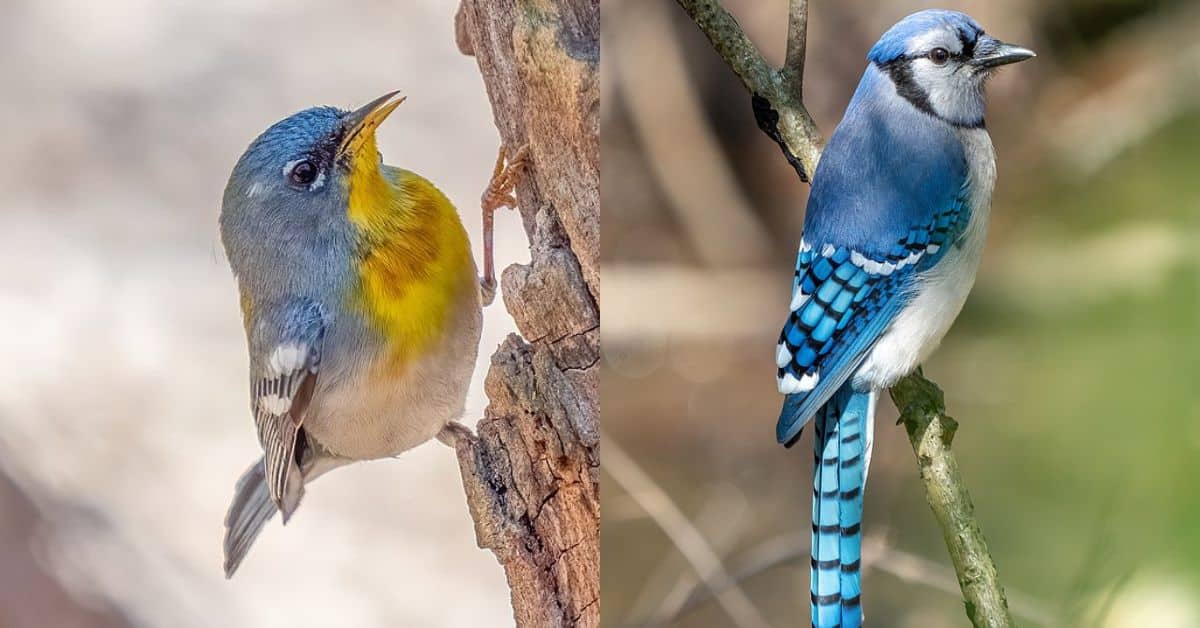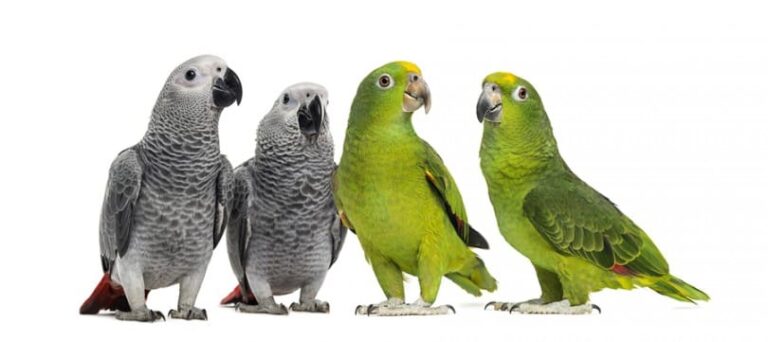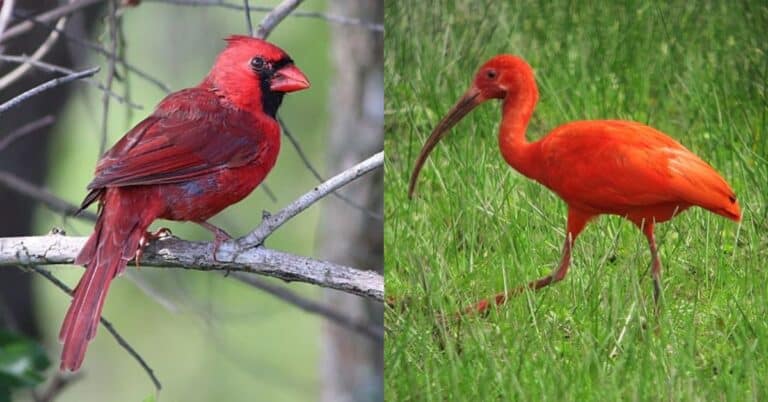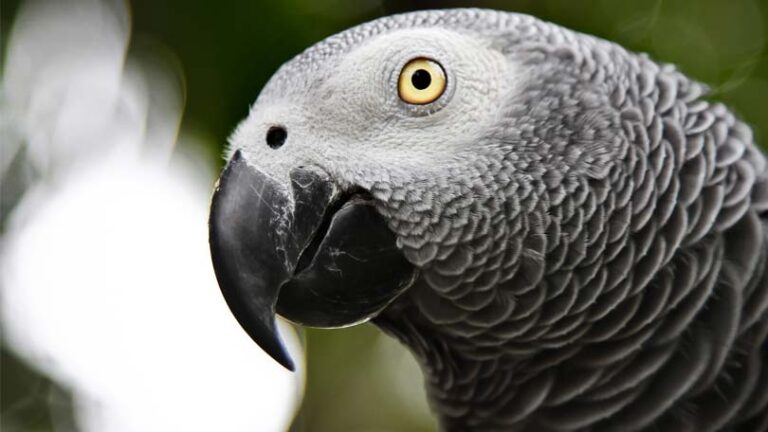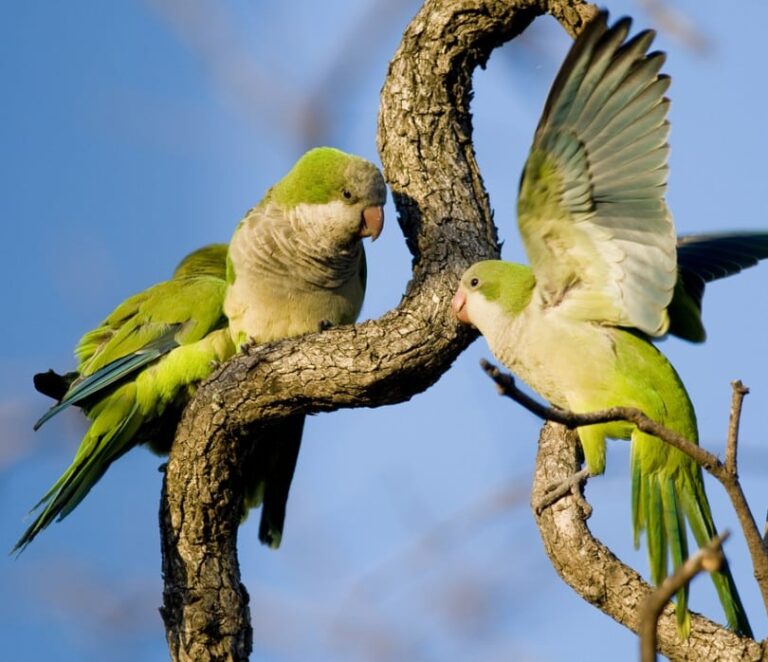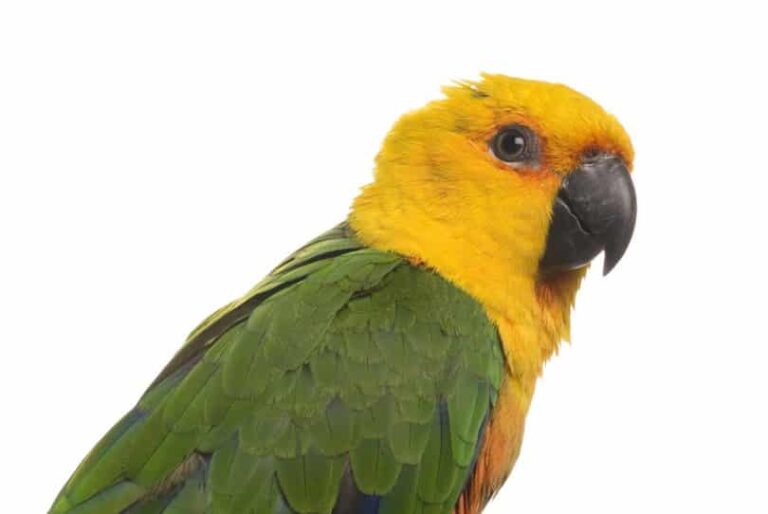10 Types of Bluebird – A Comprehensive Guide to Their Habitats
Have you ever heard of the concept of the “bluebird of happiness”? It’s fascinating to discover that there’s some genuine significance to it!
Bluebirds are often regarded as spirit animals, offering guidance and protection to individuals. It’s nearly impossible to encounter these extraordinary birds in the real world without experiencing an unexpected surge of joy and optimism.
Across different cultures worldwide, bluebirds are associated with a wide array of meanings, all carrying positive connotations. Some even hold the belief that bluebirds symbolize a connection between the living and those who have departed. Particularly among Native American tribes, bluebirds are linked with the return of spring following the rigors of winter, as well as with prosperity and fertility.
In this article, we will discuss 10 types of bluebird, their unique characteristics, and behavioral patterns.
What Does a Bluebird Look Like? Key Features & Main Characteristics
All types of bluebird have a round body, long wings, and short legs. It has a short, straight black beak. To distinguish between male and female bluebirds, you can look at their colors.
- Males have bright blue heads and wings.
- Females have less vibrant colors, with grayish heads and backs and bluish wings.
Bluebirds mainly eat beetles, crickets, grasshoppers, and caterpillars. When it gets cooler and there are fewer insects, they also enjoy munching on fruits and berries.
These birds are excellent fliers with remarkable eyesight. They can spot insects on the ground even when they are 60 feet away. Eastern bluebirds are known for their singing, which they use to communicate with their flock members. They also use their voices to warn off predators from their small, cup-shaped nests, which are often tucked inside old woodpecker holes.
Most baby birds, called fledglings, leave the nest approximately 3 weeks after they are born, but some stay behind to assist their parents with the next batch of eggs.
10 Most Unique Types of Bluebird
Bluebirds cannot produce blue pigment in the same way as red birds, who get their red color from the foods they consume. Instead, the reason why bluebirds’ plumage looks blue is simply an optical illusion brought about by the way light waves interact with their feathers.
Here is the list of 10 types of bluebird that can show you how they can express all blue hues:
1. Mountain bluebird
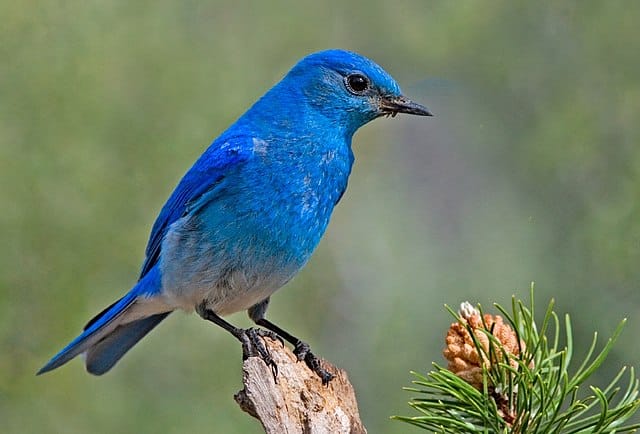
With a sky-blue frontage and a vivid cerulean back, the male Mountain Bluebird is one of the bluest birds in Western North America. Females, in contrast, are monotonous, having bodies that are predominantly pale gray with only a few blue accents. This bird is a voracious eater, devouring berries, bugs, and caterpillars.
Mountain bluebirds breed in mountainous areas from Alaska to Utah, including the Rockies. However, they favor the warmer winter conditions found in eastern California, West Texas, and most of Arizona and New Mexico.
2. Blue Grosbeak
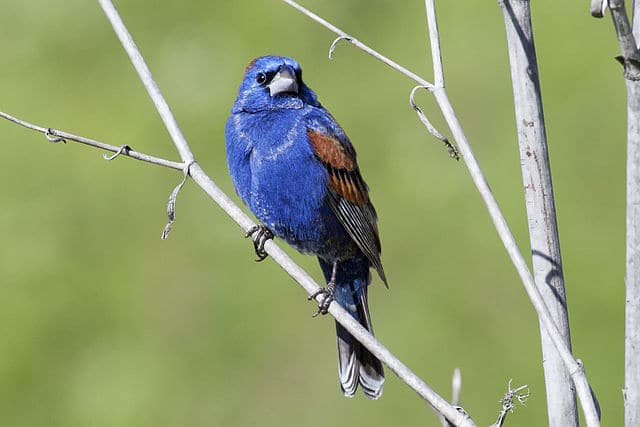
The Blue Grosbeak resides in bushes and uncultivated fields in southern Mexico and the United States. You could catch a glimpse of it flicking and moving its tail as it sits on the edge of a bush.
Keep in mind that only males have the bright blue feathers that almost completely cover their bodies. The bars on their wings exhibit a dynamic color shift and make them distinct. Females are coppery brown with only very slight blue undertones.
3. Eastern & Western Bluebird
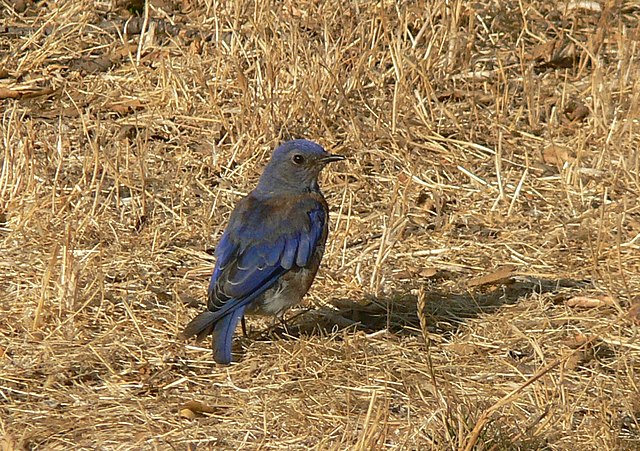
Notably, both Eastern and Western male and female bluebirds share similar color patterns, although the hues are noticeably less vivid in females. For bird enthusiasts, it’s common knowledge that bluebirds display remarkable adaptability to suburban environments. In contrast to their counterparts in mountainous habitats, Eastern and Western bluebirds readily choose to build their nests in specially provided nest boxes.
If you wish to attract some types of bluebird to your yard, consider offering a supply of either dried or live mealworms. This gesture can turn your yard into a bustling feeding station for diligent parent bluebirds as they work tirelessly to nourish their growing chicks.
4. Indigo Bunting
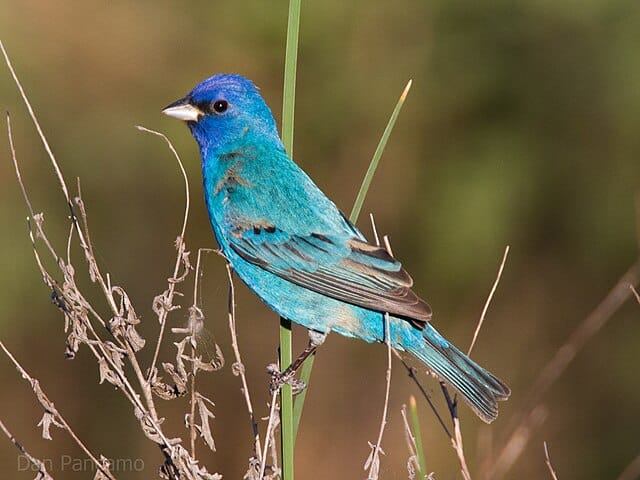
The Indigo Bunting, one of the brightest types of bluebird in the Eastern United States, is impossible to miss as it flutters down a roadside or sits on power wires. Females have a bland brown color, while males have distinctive blue feathers. It’s wise to look for Indigo Buntings throughout the summer in the Eastern United States. But remember that females are harder to find since they create all the nests and take care of the chicks.
5. Blue Jay
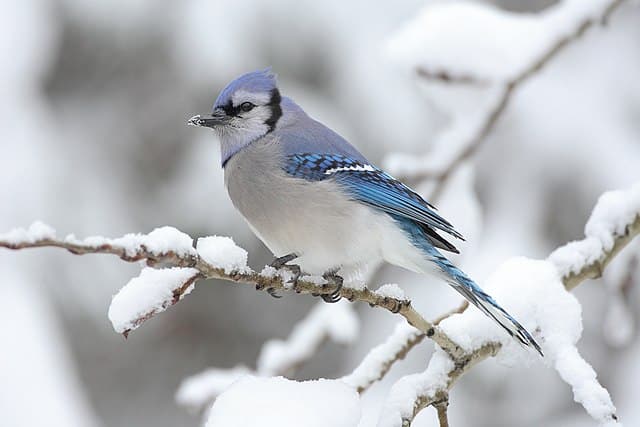
If you’ve ever heard a Blue Jay’s distinctive chirping, you could have the impression that it sounds almost metallic. These huge, intelligent birds have blue, white, and black markings. These types of bluebird come to your feeder as opportunists and forage on the ground for nuts and insects. They are widespread throughout much of Canada and the eastern United States.
A fascinating fact about blue jays is that, in contrast to other types of bluebird, they collect acorns from oak trees and store them underground for later use when food is in short supply. They can even mimic hawk noises to occasionally scare predators.
6. Barn Swallow
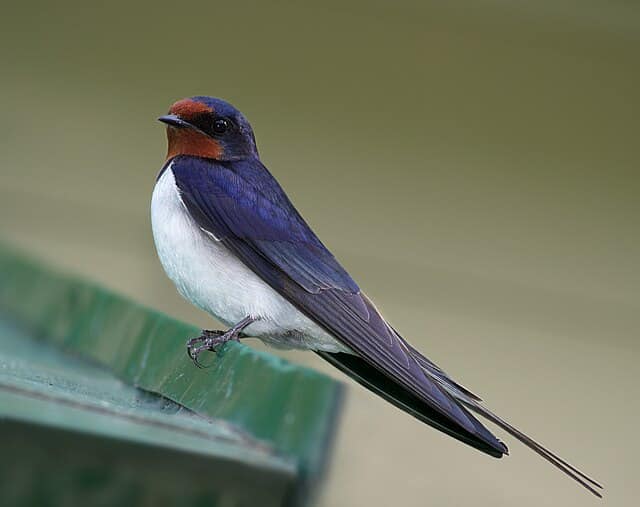
Just like other types of bluebird, Barn swallows exhibit a striking coloration featuring a rich, deep purple-blue or navy blue adorning their head, back, and wings, which contrasts beautifully with their vibrant orange face and belly.
These avian types of bluebird have displayed exceptional adaptability to human-made structures and environments. The construction of their nests is a collaborative effort, with both parent birds diligently fashioning them from mud and grass.
These types of bluebird are frequently spotted throughout the United States, particularly during the spring and summer months.
7. Cerulean Warbler
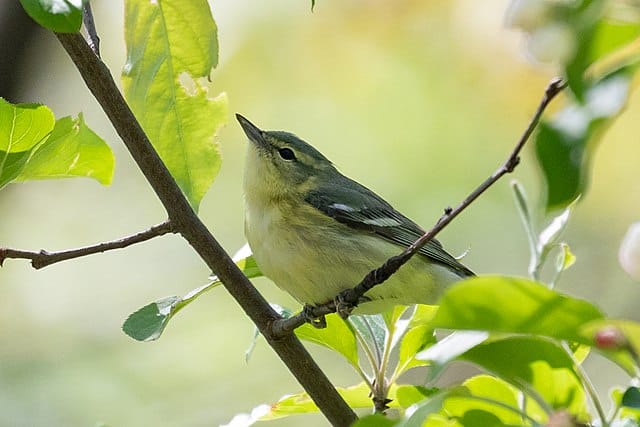
The male Cerulean Warbler has a remarkable sky-blue color that, in the proper lighting, can even appear purple. They have a white throat with black striping. Female warblers, like other warblers, have distinct yellow feathers with a light blue wash.
After spending the winter in northern South America, these warblers migrate to the United States to spend the summer in Pennsylvania, Ohio, Illinois, Tennessee, Michigan, and Wisconsin.
8. Northern Parula
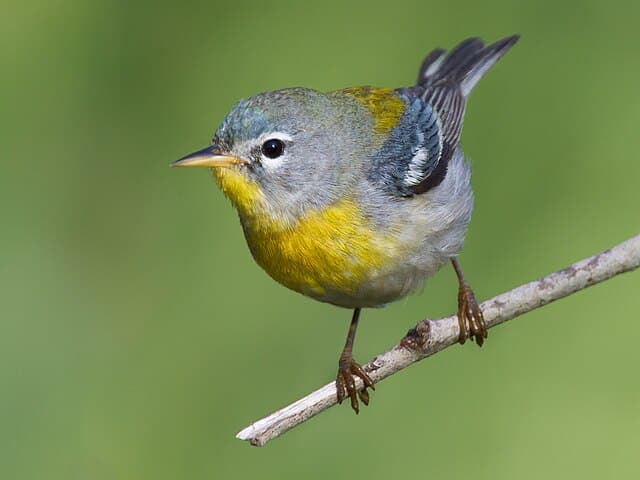
In contrast to other types of bluebird, the Northern Parula is difficult to observe on dense treetops due to its array of vivid patches of yellow, blue, and white, but it is easy to hear. You can hear the buzzing sound all through spring and summer.
For the winter, members of the family of warblers, including Northern Parulas, migrate south. During the breeding season, they can be found in the Southeast of the United States or along a habitat strip that runs from northern Minnesota all the way east to Newfoundland.
9. Steller’s Jay
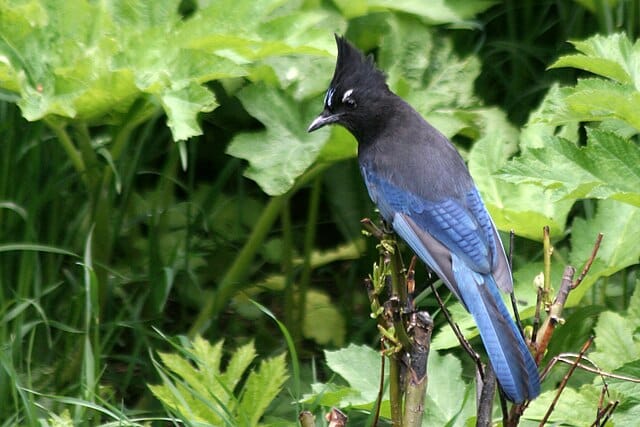
This lively and sociable jay has stunning blue feathers that fade from gray to blue from its crown to its tail. Males and females both have this striking color. They crack open acorns and seeds using their beaks, just like other Jays do.
Because they occasionally fly in flocks, Steller’s Jays can be found in the western half of the USA. They do not migrate, remaining year-round residents of the Rocky Mountains and the Pacific Northwest up to Alaska.
10. Lazuli Bunting
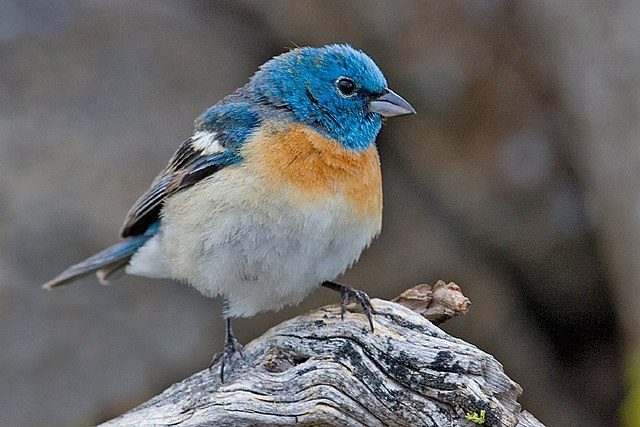
You might be concerned that you’ll confuse a Lazuli Bunting with an Indigo Bunting. You can distinguish them in several ways, so don’t worry about it. Lazuli buntings are somewhat blue-feathered, but only the males of both species have blue feathers.
They have a white belly and a brown breast. Lazuli Buntings are indigenous to the West, not the East, of the United States. Compared to their Indigo counterparts, they call louder and more clearly.
Behavioral Patterns of Specific Types of Bluebird
The majority types of Bluebird display territorial behavior, favoring open grasslands with scattered trees. During the spring and summer, bluebirds can typically have 2-4 chicks. Males scout potential nest sites and engage in special behaviors like singing, flapping wings, and placing materials in nesting sites to attract female mates. If a female accepts the male and the nesting site, she is responsible for building the nest and incubating the eggs.
Young bluebirds in nests face threats from predators like snakes, cats, and raccoons. Furthermore, they must compete for nesting spots with species such as the common starling, American crow, and house sparrow often take over bluebird nesting sites and cause harm to eggs and adult bluebirds.
In the 1970s, the majority types of bluebird populations suffered a significant decline, with estimates suggesting up to a 70% reduction. However, in late 2005, Cornell University’s Laboratory of Ornithology documented bluebird sightings in the southern U.S. during its annual Backyard Bird Count. This resurgence is largely thanks to the efforts of dedicated volunteers who establish and maintain various types of bluebird.
Final Thoughts
Now there is no doubt that the bluebird is not only characterized by amazing colors but also has unique personality traits. The wide diversity of types of bluebird species speaks to the richness of the flora and reminds us once again how amazing the world is.
After reading this article, you will already know that seeing a bluebird is not just a momentary delight. This bird carries a deeper meaning and will bring you new opportunities along with the joy of life.

Nato is a content writer and researcher with a background in psychology who’s eager to explore the wonders of nature. As a travel enthusiast and animal lover, she hopes to inspire others to discover and cherish the beauty and importance of the natural world.

